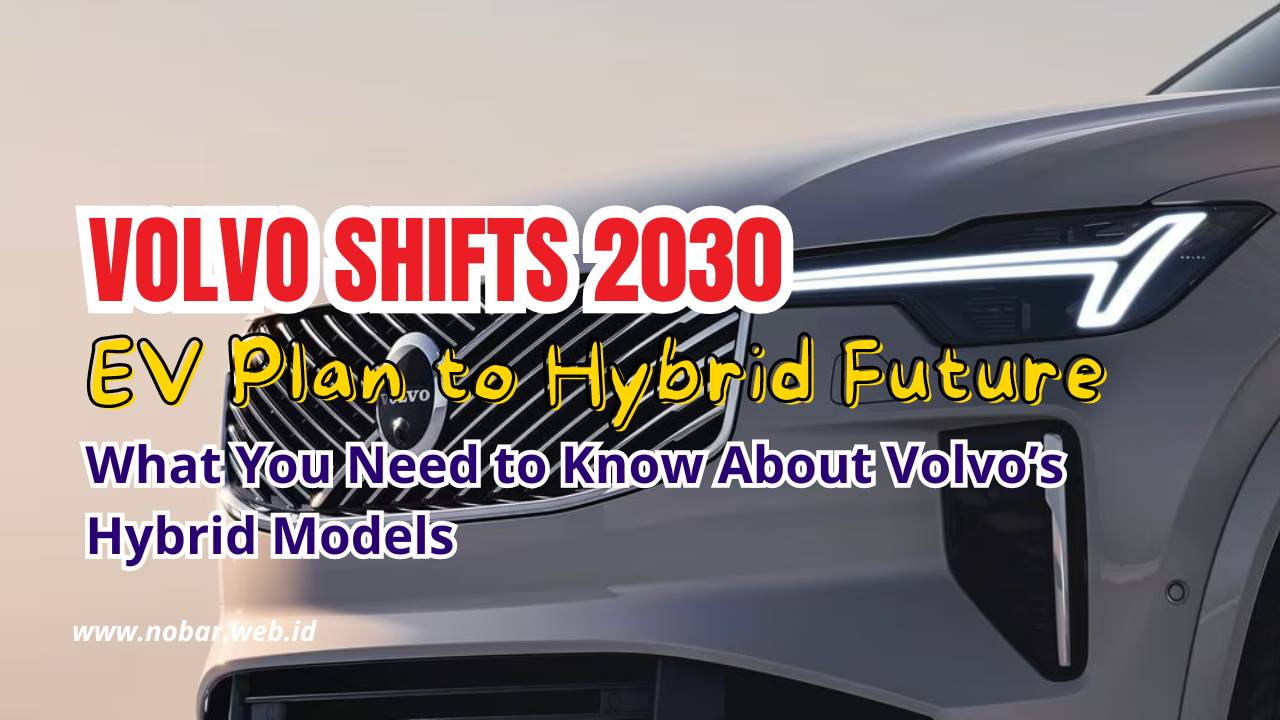Volvo’s original plan to switch entirely to battery-electric vehicles (BEVs) by 2030 has taken a different direction. Instead of going fully electric by the end of the decade, Volvo has decided to focus on a mix of hybrid technology, including mild hybrids (MHEVs) and plug-in hybrids (PHEVs). This change reflects the evolving market and external challenges such as the reduction of EV subsidies and increased trade tariffs.
Why the Change in Volvo’s Electric Vehicle Plan?
Volvo’s CEO, Jim Rowan, stated that shifting consumer demand and changes in the global economy forced them to adjust their strategy. Initially, the company was set on transitioning to 100% electric vehicles by 2030. However, fluctuating tariffs and the removal of subsidies made fully electric vehicles less attractive to some consumers. Instead of sticking to the original plan, Volvo is pivoting to a hybrid approach, making sure their vehicles stay relevant in different markets.
What is the Hybrid Approach?
While Volvo will not entirely abandon electric vehicles, they plan to integrate more hybrids into their lineup. By 2030, they expect 90 to 100% of their cars to have a plug. This includes both BEVs and PHEVs. Plug-in hybrids combine a gasoline engine with a rechargeable battery, allowing drivers to switch between gasoline and electric power.
The shift means that traditional internal combustion engines will still be part of the Volvo family, but these engines are likely to power hybrid models only. Volvo spun off its internal combustion engine development to a company called Aurobay, which is now responsible for producing these engines.
What Are Volvo’s Mild Hybrid and Plug-in Hybrid Models?
Volvo offers two types of hybrid technologies:
- Mild Hybrid (MHEV): In these vehicles, the gasoline engine works with a small battery to improve fuel efficiency. MHEVs do not require charging from an external power source.
- Plug-in Hybrid (PHEV): These cars use both a gasoline engine and a larger battery, which can be charged by plugging into an outlet. PHEVs can drive short distances solely on electric power before switching to gasoline.
The Future of Volvo’s Hybrid Lineup
Volvo’s hybrid strategy isn’t just about staying competitive—it’s about offering flexibility to their customers. The hybrid models provide an option for drivers who want to experience the benefits of electric driving without the need for a fully electric vehicle. By 2030, the majority of Volvo’s sales will come from hybrid and electric models. Improved battery technology will also enhance the performance and range of these hybrid vehicles, giving drivers more options for clean and powerful driving.
Frequently Asked Questions (FAQs):
Q1: Why did Volvo change its all-electric plan for 2030?
Volvo adapted its strategy due to shifts in market demand, changes in government policies, and increasing costs related to tariffs. The company now focuses on a hybrid future, blending both electric and internal combustion technologies.
Q2: Will Volvo still make fully electric cars?
Yes, Volvo will continue to produce fully electric cars (BEVs), but they will also offer hybrid models as part of their lineup, including mild hybrids (MHEVs) and plug-in hybrids (PHEVs).
Q3: What is the difference between a mild hybrid and a plug-in hybrid?
A mild hybrid (MHEV) uses a small battery to assist the gasoline engine, but it cannot drive solely on electric power. A plug-in hybrid (PHEV), on the other hand, can run on electric power alone for short distances and requires charging from an external source.
Q4: What percentage of Volvo’s cars will be hybrids by 2030?
By 2030, Volvo expects 90 to 100% of its vehicles to have a plug, meaning they will either be fully electric or plug-in hybrids.
Q5: How will Volvo’s plug-in hybrids improve by 2030?
As battery technology improves, Volvo’s plug-in hybrids will have better electric range and performance, offering a smoother transition for drivers between gasoline and electric power.
Q6: What is Aurobay’s role in Volvo’s future?
Aurobay, a joint venture between Volvo and Geely, is responsible for developing and producing internal combustion engines for Volvo’s hybrid vehicles.
Q7: Are there any environmental benefits to choosing a hybrid over a fully electric vehicle?
Hybrid vehicles, especially plug-in hybrids, provide flexibility by allowing drivers to reduce gasoline consumption for short trips. They are a good option for those who aren’t ready to fully transition to electric vehicles but still want to minimize their environmental impact.
Q8: What are the key advantages of Volvo’s hybrid models?
Volvo hybrids offer a balance of power and efficiency. With plug-in hybrids, you can drive on electric power for short trips, reducing emissions and fuel consumption, while still having the reliability of a gasoline engine for longer journeys.
Q9: How do plug-in hybrids save on fuel costs?
Plug-in hybrids (PHEVs) can run on electricity for short trips, which reduces the need for gasoline. Many drivers of Volvo PHEVs report that over 50% of their miles are powered by electricity, significantly lowering their fuel expenses.
Q10: Will Volvo continue to innovate in electric vehicle technology?
Yes, Volvo remains committed to advancing electric vehicle technology. While they have shifted to a hybrid focus, they continue to invest in the development of both BEVs and PHEVs to meet the demands of the future.
Volvo’s hybrid approach ensures that the brand remains adaptable in an evolving market, providing drivers with a range of options from traditional combustion engines paired with hybrid technology to fully electric vehicles. By 2030, the company’s portfolio will be a blend of these innovative options, giving consumers the flexibility they need in a rapidly changing automotive landscape.



